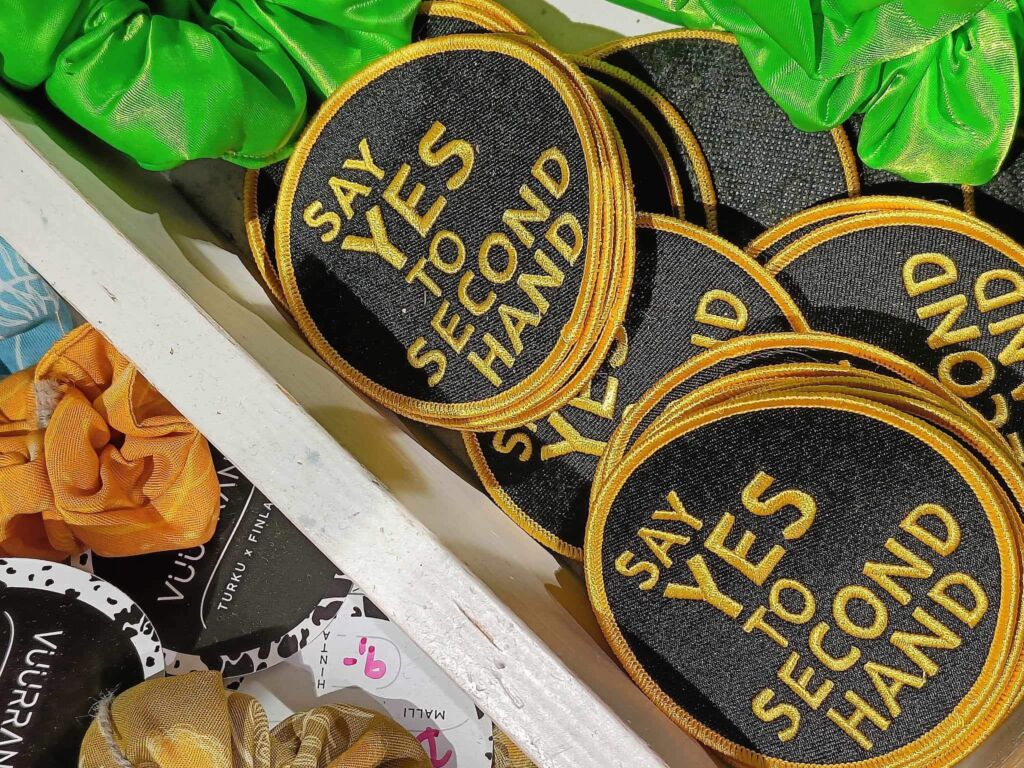Does second-hand replace buying of new clothes?



When buying second-hand clothes instead of new ones you save natural resources. Materials that were needed to produce those old clothes, get a prolonged life, and there’s no need to adopt new resources. Or is it as simple as that? Do second-hand clothes actually help us to save natural resources, or even the world from drowning into waste?
Reduce, Reuse, Recycle
The most important thing is to register if a purchase is based on a need or want. If you buy something you actually need, not just ‘want’, and instead of the new, environment says thank you. That is circular economy. Reduce. Reuse. Recycle. (Plus a few extra words like ‘repair’.)
There’s still another question there: Do people actually reduce buying new if they buy reused aka second-hand?
This question was examined as student work was commissioned by the Baltic2Hand project during the spring of 2024. The students carried out a poll on the topic. The questionnaire was shared in the social media channels of Telaketju, at the campus of Turku University of Applied Sciences, and in the multinational social circles of students. It got 122 answers. The results give interesting insights into the topic. Let’s take a look at them more closely!
There is no longer stigma in buying used
The poll started with a question of the most common places to buy clothes. For the respondents, physical second-hand stores were the most popular place to buy clothes, by a slim difference, followed by physical stores selling new items. Online stores for new clothes were more popular than online second-hand stores or second-hand sales platforms. It seems that online stores haven’t yet beaten the brick-and-mortar stores, especially when it comes to second-hand.
According the poll, 55 % of respondents shop second-hand at least monthly. The most motivating factors for the respondents to buy second-hand clothes were affordability, ecological values, and the possibility to get unique finds. Approximately 80 % of the respondents answered that ecological aspects get the importance of at least 4, on a scale of 1 to 5, when purchasing or recycling clothes.
It was also asked in the poll, if there are some clothes that people wouldn’t want to buy second-hand. Over a third of the respondents mentioned underwear or swimwear, and one third of the respondents said they don’t buy clothes made from poor materials. Therefore, it seems that people want to buy high-quality clothes, excluding undergarments, from the flea markets. Approximately 4 of 5 respondents either buy or could buy second-hand as a gift for someone. That’s nice!
The poll also inquired about challenges that people face when buying from second-hand stores. Finding a specific type of clothing was mentioned most often. Quality or cleanliness of clothing was the second biggest issue for people, and pricing and value of the items also got noticed almost as often.
As a continuation of the previous question, it was also asked what kind of improvements in the second-hand shops would make the respondent shop more second-hand. “Sorting clothing by size, type, or color” was definitely the most popular answer, and “better quality control of sold pieces” was mentioned the second most.
Second-hand instead of, not in addition to the new!
It seems people brought up improvements to the problems they’ve noticed: if finding specific clothes is an issue, then sorting clothing at the stores is the solution, and if the flea markets sell poor-quality or unclean clothes, then the quality control is the solution. It seems quite logical!
Then we come to the question we started this text with. When asking “Does buying second-hand increase the amount of clothing you purchase?”, about third of the respondents answered they sometimes or often buy second-hand clothes they don’t use. On the other hand, more than half of the respondents said they don’t buy extra clothes as a result of buying from second-hand stores. To compare, the study of The Finnish Commerce Federation (Kurjenoja 2023) found that fifth of the Finnish people buying second-hand also buy clothes they never use – either new or second-hand.
To conclude, it seems that for most people, buying second-hand clothing replaces buying of new clothes. Still, there are also many people who may use second-hand as an excuse to buy more than they need. The topic should be researched more in the future. Meanwhile, remember: “Second-hand instead of not in addition to the new!”
Reference
Eija Valkealahti
Energy and environmental engineer student, Turku UAS
These materials were created in the Baltic2Hand project which is an Interreg Central Baltic Programme 2021–2027 project that is co-funded by the European Union. Read more about the Baltic2Hand project.
